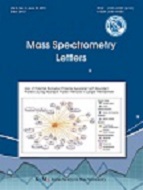
- P-ISSN 2233-4203
- E-ISSN 2093-8950

Cross reacting antibodies can cause an overestimation of the results of immunoassays. Therefore, alternative methodsare needed for the accurate quantification of steroids. Gas chromatography combined with isotope-dilution mass spectrometry(GC-IDMS) is developed to quantify urinary active androgens, testosterone, epitestosterone and dihydrotestosterone, which areclinically relevant androgens to both hair-loss and prostate diseases. The method devised involves enzymatic hydrolysis with β-glucuronidase, solid-phase extraction, liquid-liquid extraction using methyl tert-butyl ether and subsequent conversion to pentafluorophenyldimethylsilyl-trimethylsilyl (flophemesyl-TMS) derivatives for sensitive and selective analysis in selected-ionmonitoring mode. Flophemesyl-TMS derivatization not only eliminates matrix interference but also has a good peak resolutionwithin a 6 min-run. A selective and sensitive GC technique with flophemesyl-TMS derivatives also allows accurate quantitativeanalysis of three active androgens when combined with IDMS. The limit of quantification of the three analytes was <50 pg/mL,and extraction recoveries ranged from 91.9 to 102.1%. The precision and accuracy were 1.2~6.5% and 89.0~106.7%, respectively. This GC-IDMS method can be useful for evaluating the drug efficacy and monitoring the biological processes responsiblefor male-pattern baldness and prostate diseases.
Nuck, B. A. (1987). . J. Invest. Dermatol, 89, 209-.
Starka, L. (1993). . Endocr. Regul, 27, 43-.
Choi, M. H. (2001). . J. Invest. Dermatol, 116, 57-.
Choi, M. H. (2003). . Clin. Chem, 49, 322-.
Luu-The, V. (2008). . Best Pract, Res. Clin. Endocrinol. Metabol, 22, 207-.
Taieb, J. (2003). . Clin. Chem, 49, 1381-.
Wang, C. (2004). . J. Clin. Endocrinol. Metab, 89, 2936-.
Moon, J.-Y. (2008). . Steroids, 73, 1090-.
Moon, J.-Y. (2010). . Cancer Epidemiol. Biomarkers Prev, 19, 388-.
Moon, J.-Y. (2009). . J. Am. Soc. Mass Spectrom, 20, 1626-.
Van Uytfanghe, K. (2004). . Clin. Chem, 50, 2101-.
Cawood, M. L. (2005). . Clin. Chem, 51, 1472-.
Tai, S. S. (2007). . Anal. Bioanal. Chem, 388, 1087-.
Wang, W. (2003). . Anal. Chem, 75, 4818-.
Thienpont, L. M. (1994). . Anal. Chem, 15, 4116-.
Choi, M. H. (1999). . Analyst, 124, 675-.
Ha, Y. W. (2009). . J. Chromatogr. B, 877, 4125-.